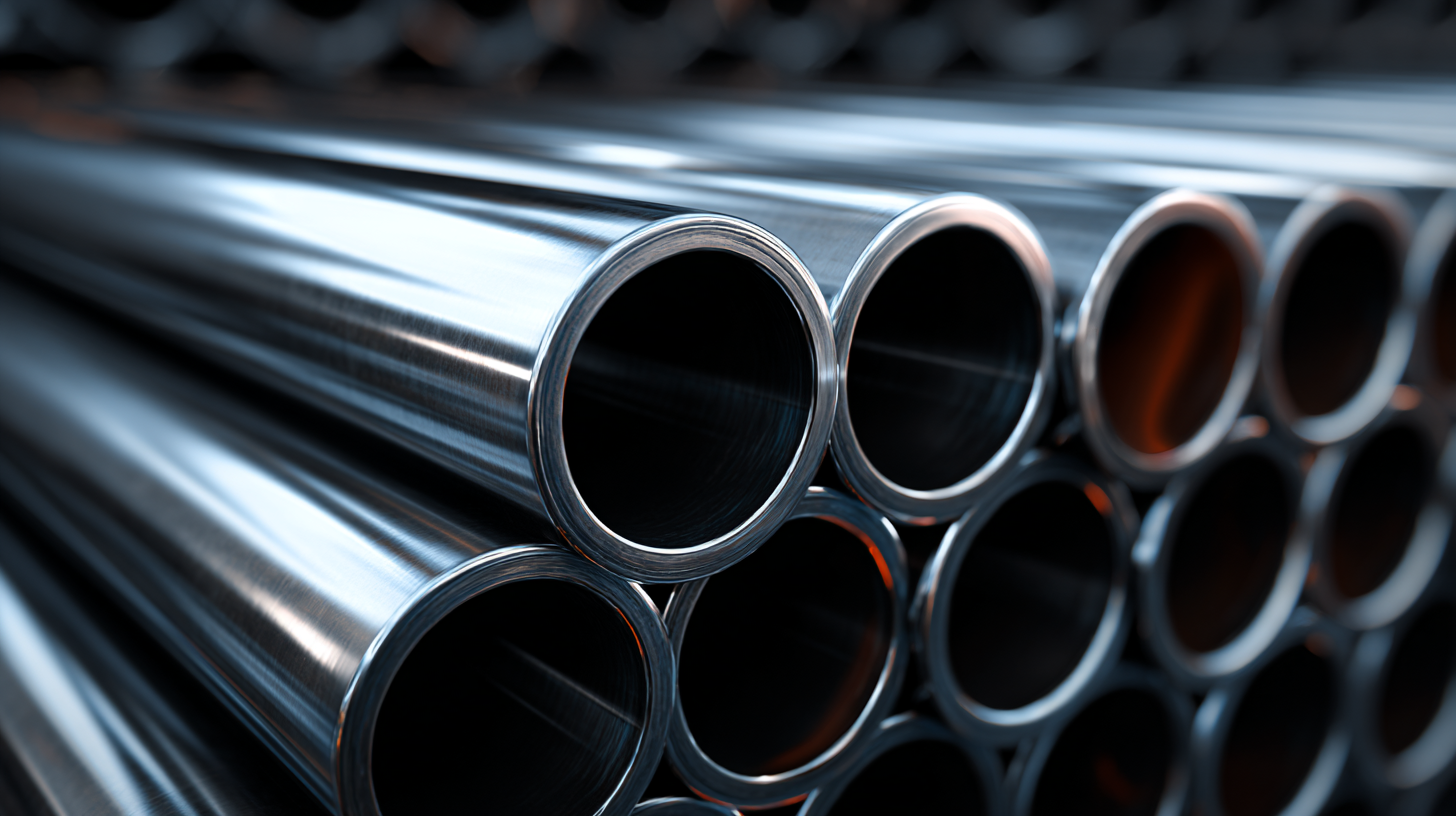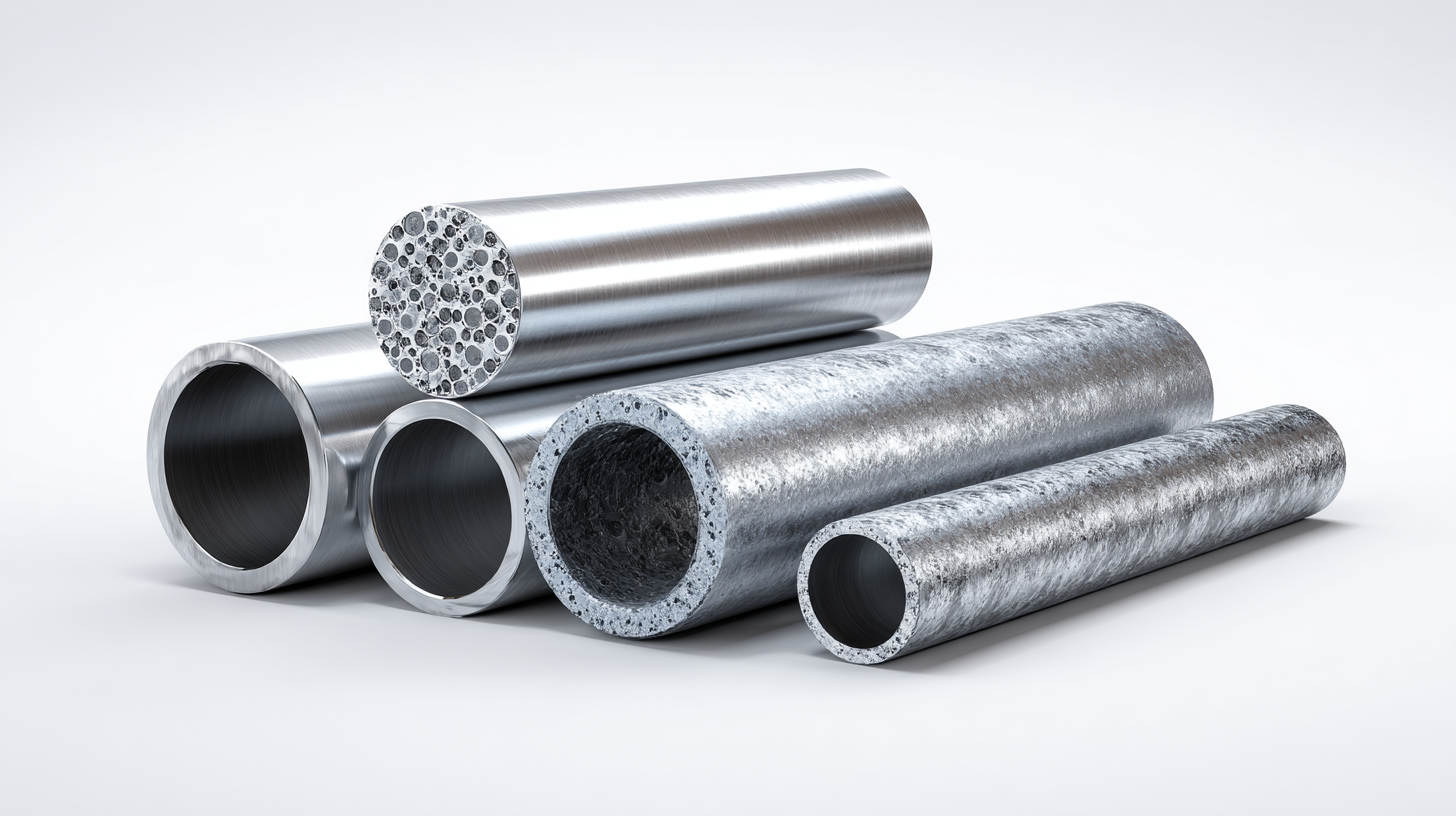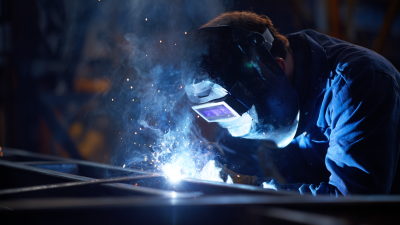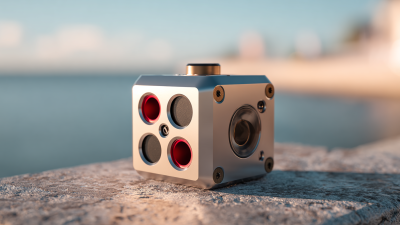Exploring the Versatility of Metal Tubes: Innovative Applications You Didn't Know About
Metal tubes have long been celebrated for their structural integrity and versatility across various industries, ranging from automotive to aerospace. According to a recent report by MarketsandMarkets, the global metal tube market is projected to reach $XX billion by 2025, driven by the growing demand for lightweight and durable materials in manufacturing.
 However, beyond their conventional roles, metal tubes are emerging as innovative solutions in unexpected applications, including medical devices, renewable energy systems, and even art installations. This exploration into the versatility of metal tubes reveals not only their established significance but also their potential to address modern challenges, enhancing functionality and aesthetics in ways previously unimagined. As we delve deeper into this topic, we will uncover innovative applications of metal tubes that push the boundaries of creativity and engineering.
However, beyond their conventional roles, metal tubes are emerging as innovative solutions in unexpected applications, including medical devices, renewable energy systems, and even art installations. This exploration into the versatility of metal tubes reveals not only their established significance but also their potential to address modern challenges, enhancing functionality and aesthetics in ways previously unimagined. As we delve deeper into this topic, we will uncover innovative applications of metal tubes that push the boundaries of creativity and engineering.
The Structural Strength of Metal Tubes in Construction Projects
Metal tubes have become indispensable in modern construction projects due to their exceptional structural strength and versatility. These tubes provide a reliable solution for frameworks, scaffolding, and piping systems, proving their effectiveness in supporting heavy loads and withstanding various environmental conditions. As the global structural steel market continues to grow, projected to surpass USD 188.63 billion by 2034, the demand for metal tubes, including ERW and welded varieties, is simultaneously on the rise, reflecting their integral role in achieving robust structural integrity.
Innovative applications of metal tubes extend beyond traditional uses, with significant growth anticipated in markets like the global ERW tubes market, expected to reach USD 1282.13 million by 2033. Beyond construction, industries are increasingly harnessing these materials for automotive and infrastructure projects. Furthermore, advancements in manufacturing techniques, such as those enhancing the durability and strength of metal tubes, are paving the way for even more innovative applications across various sectors, demonstrating the crucial role these components play in modern engineering and design.

Creative Uses of Metal Tubes in Furniture Design and Interior Decor
Metal tubes have emerged as a favored material in contemporary furniture design and interior décor, thanks to their unparalleled strength and versatility. According to a report from Grand View Research, the global metal furniture market is projected to reach $31.1 billion by 2025, showcasing an increasing trend among designers and consumers alike towards sustainable and innovative materials. Designers are now leveraging the aesthetic appeal and durability of metal tubes to create everything from sleek coffee tables to elegant shelving units, enhancing both functionality and style in modern interior settings.
One standout creative use of metal tubes is in the construction of modular furniture. By incorporating metal tubing into their designs, manufacturers can offer adaptable solutions that cater to various living spaces. For instance, products such as metal tube chairs and tables can be easily disassembled and reconfigured, making them ideal for urban dwellers who often face space constraints. Moreover, a study by the Furniture Industry Research Association highlighted that consumers are increasingly seeking unique, customizable furniture options that reflect their individual taste, further signaling the potential for metal tube applications in personalized interior design. With these innovative applications, metal tubes are not just structural components; they are becoming central to the aesthetic narrative of modern interiors.

Innovative Metal Tube Applications in Renewable Energy Solutions
Metal tubes have emerged as crucial components in the realm of renewable energy solutions, reflecting their versatility and adaptability. One noteworthy application is in solar thermal systems, where metal tubes are used to transport and distribute heat generated by solar collectors. This method efficiently harnesses solar energy for residential and industrial heating processes, significantly reducing reliance on fossil fuels. Their capacity to withstand high temperatures and pressures makes these tubes ideal for maximizing energy efficiency in such applications.
In wind energy, metal tubes play a vital role in the construction of turbine structures. These tubes are utilized as support frameworks, providing the strength and stability necessary for turbines to withstand strong winds and environmental stressors. Advanced designs often incorporate lightweight yet durable metal alloys that enhance the overall performance of wind farms, facilitating greater energy output. Furthermore, their recyclability aligns perfectly with the principles of sustainability, making metal tubes an excellent choice for eco-friendly renewable energy projects.
Exploring the Versatility of Metal Tubes: Innovative Applications You Didn't Know About
| Application Area | Description | Material Type | Benefit |
|---|---|---|---|
| Solar Panel Supports | Structural frameworks for mounting solar panels. | Aluminium Alloy | Lightweight and corrosion resistant. |
| Wind Turbine Towers | Vertical structures supporting wind turbine blades. | High-Strength Steel | Durability and stability in high winds. |
| Hydrogen Storage | Tubes used for storing hydrogen gas under pressure. | Composite Materials | Improved safety and lightweight properties. |
| Geothermal Systems | Pipes that circulate fluids for geothermal heat exchange. | Copper | Excellent thermal conductivity. |
| Bioenergy Piping | Transporting biogas from anaerobic digesters. | Stainless Steel | Corrosion resistant and sanitary for gas transport. |
The Role of Metal Tubes in Advanced Medical Devices and Equipment
Metal tubes have become indispensable components in the realm of advanced medical devices and equipment due to their remarkable properties. Their strength, durability, and resistance to corrosion make them ideal for use in a variety of medical applications. For instance, metal tubes are commonly utilized in the construction of catheters, which require flexibility and reliability while being inserted into the human body. The precision manufacturing of these tubes allows for exact measurements, ensuring that devices such as stents fit perfectly, thus enhancing patient safety and outcomes.
In addition to their structural benefits, the versatility of metal tubes extends to their ability to accommodate various technologies, such as minimally invasive surgical tools and diagnostic equipment. Advanced imaging devices often rely on metal tubing to house sensitive components while maintaining the necessary sterility and safety during procedures. Furthermore, recent innovations in metal alloys have led to improvements in biocompatibility, expanding the potential for metal tubes in future medical applications. This adaptability positions metal tubes as critical contributors to the evolution of medical devices, paving the way for innovations that can improve surgical techniques and patient care.
Unique Art Installations Featuring Metal Tubes as a Medium
Metal tubes have increasingly become a favored medium for artists looking to push the boundaries of conventional art installations. Their structural integrity and aesthetic appeal offer unique opportunities for creativity. According to a report by the Fine Art Trade Guild, the global fine art market was valued at approximately $67.4 billion in 2021, with artists continuously exploring innovative materials. Metal tubes, with their versatility and robustness, are being utilized in ways that challenge viewers’ perceptions and create immersive experiences.
One notable trend is the use of metal tubes to create intricate suspended structures that transform public spaces. For instance, a recent installation in a major urban center featured a sprawling network of aluminum tubes, designed to mimic organic forms in nature. The installation not only enhanced the aesthetic of the space but also encouraged interaction, inviting onlookers to navigate through and engage with the artwork. Statistics from the International Association of Art suggest that such installations can significantly increase foot traffic in urban areas by up to 30%, showcasing their potential not just as art but as vibrant elements of community engagement.
Exploring the Versatility of Metal Tubes in Art Installations
Related Posts
-

Exploring Advanced Metal Welding Techniques: Boosting Efficiency and Quality in Industrial Applications
-

Unlocking Precision and Efficiency in Manufacturing with Advanced Laser Cutting Machines
-

Unlocking Efficiency How Nesting Software Revolutionizes Material Cutting Processes
-

Exploring the Future of Metal Cutting Technologies: Trends, Innovations, and Market Insights for 2024